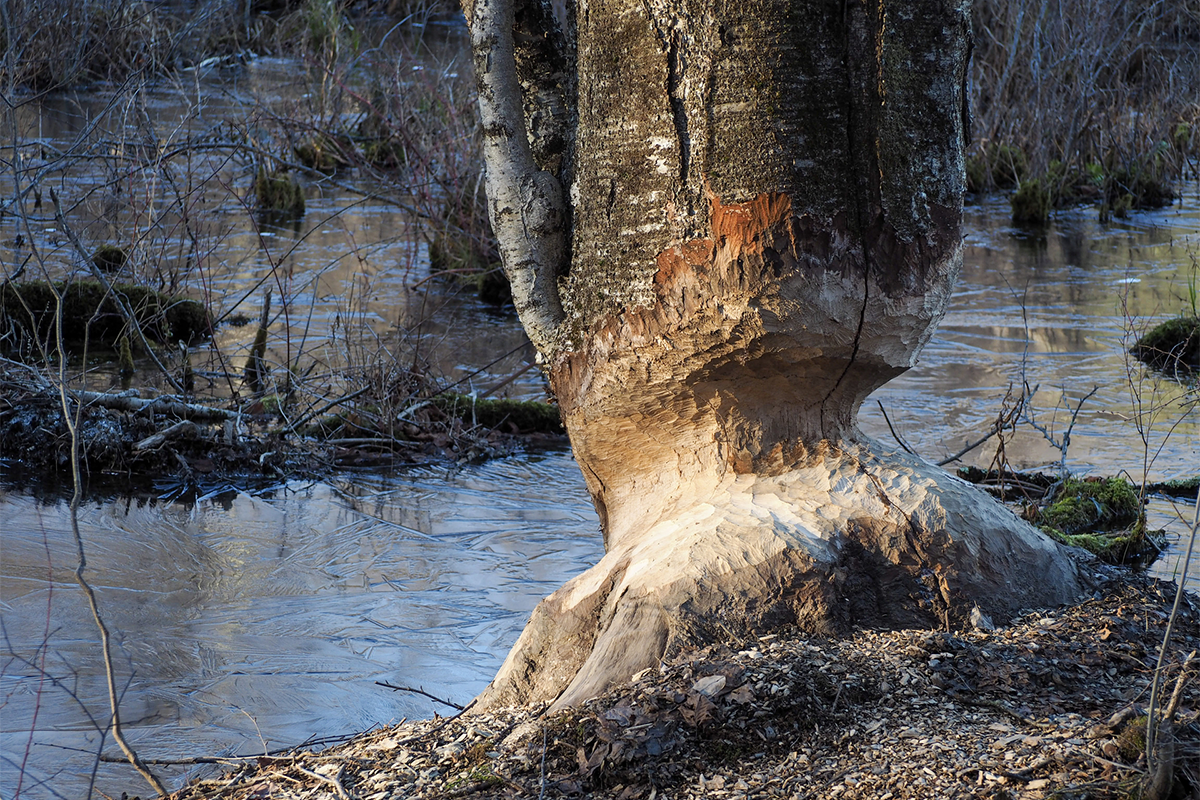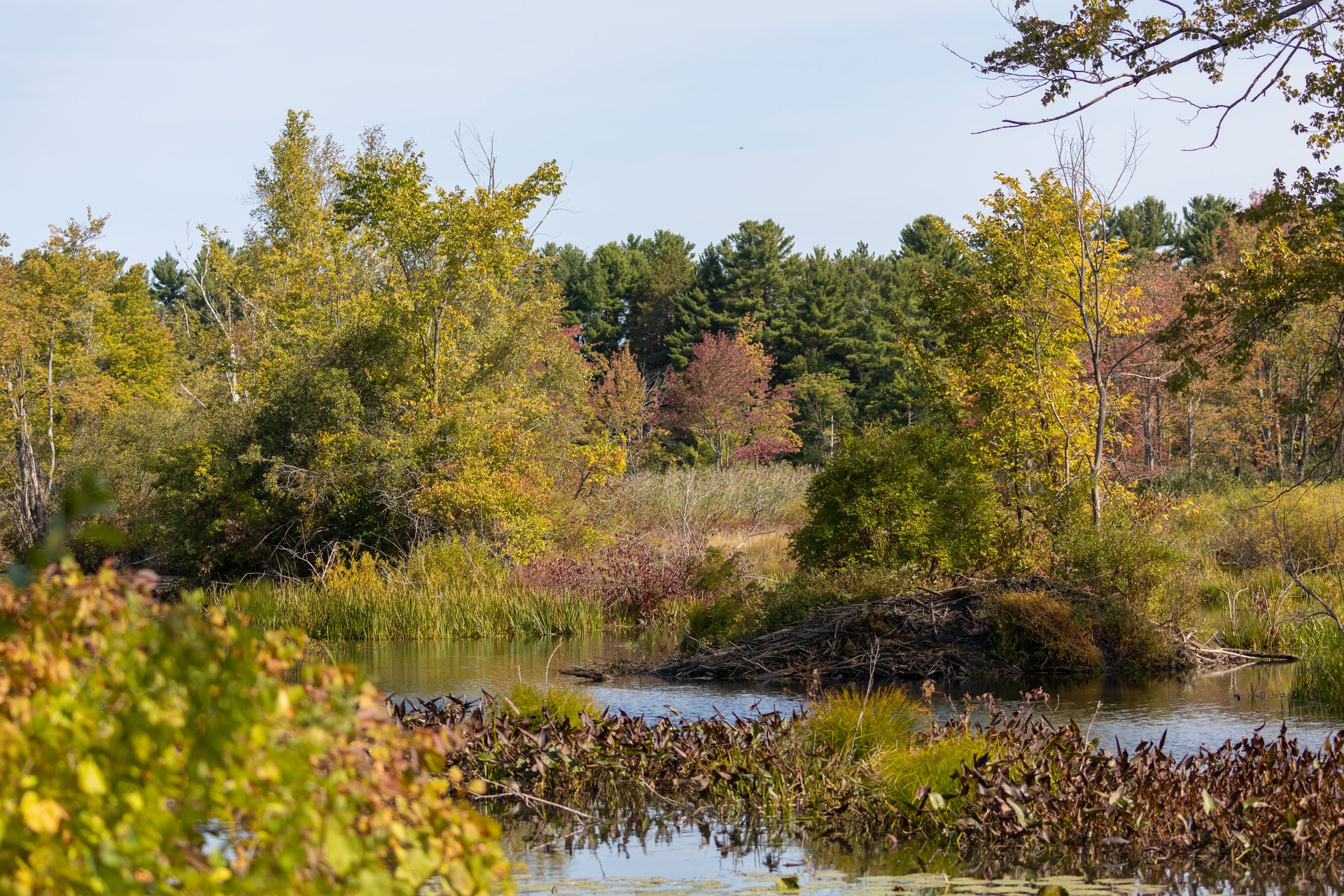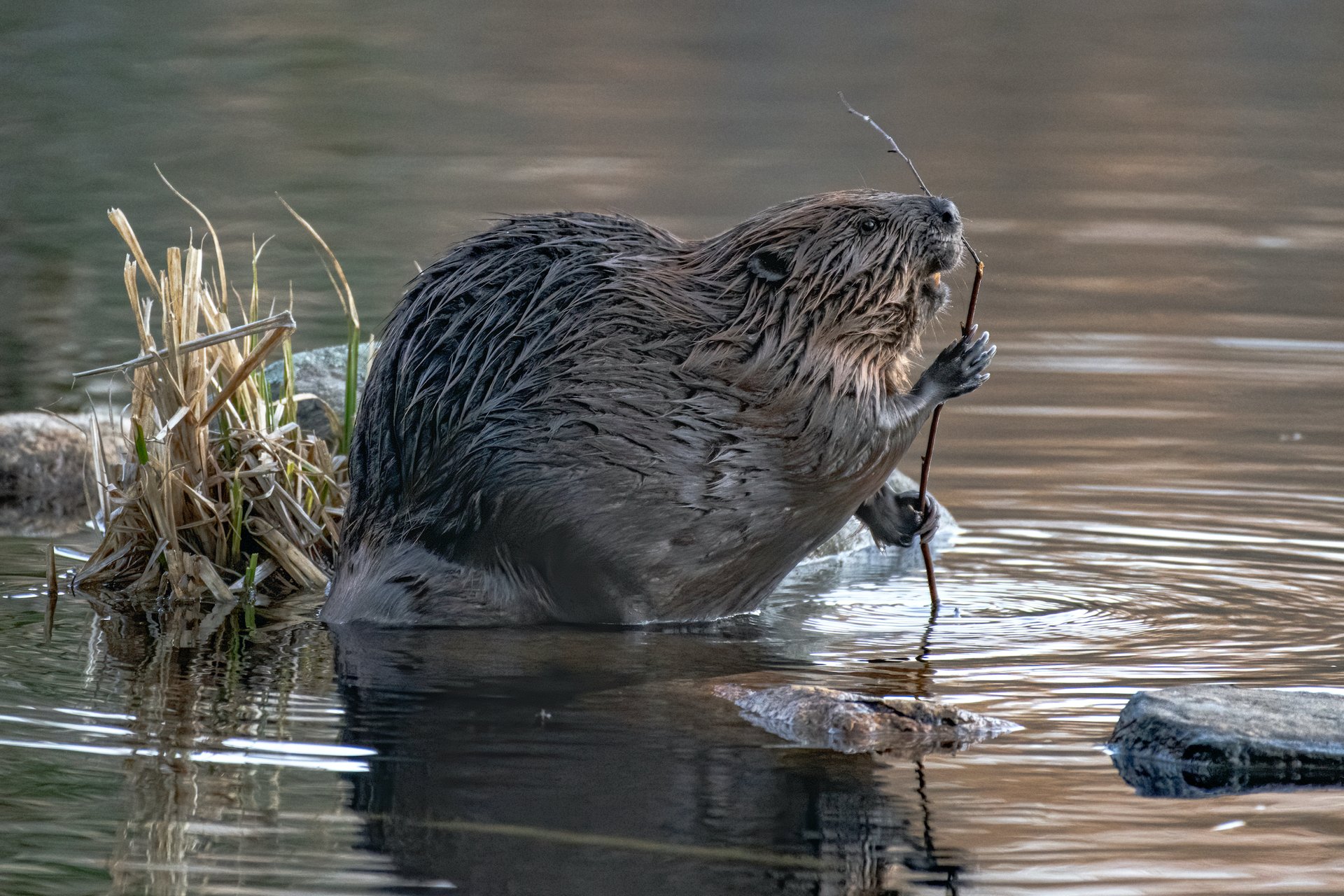Busy Beavers
November 09, 2023
A furry brown head bobs through the water surface—perhaps an otter or a muskrat? Once the thick, flat tail slaps the water, there’s no doubt about the mysterious cruiser’s identity— it’s a beaver!
These not-so-little rodents take their work seriously, especially in the fall when they prepare their lodges for winter. The beavers’ other iconic building project, the dam, keeps them safe, creates and restores wetlands, and supports wildlife communities.
What’s with the Dam?
Lodges and dams are two different structures—a lodge is a shelter, and a dam blocks flowing water to create a beaver marsh. The new wetland expands a beaver colony’s access to a food supply, helps the beavers travel more easily through their home terrain, and provides some safety from terrestrial predators.
Building a Home
Each year, a beaver couple mate (they stay partners for life!) and the female gives birth to 1–9 kits. Over the next two winters, these youngsters stay with their parents before heading out on their own. Because of this extended family culture, beaver lodges need to be big and sturdy enough for years of use. It’s not an easy task to construct such a structure.
Under Construction
To build their lodges and dams, beavers gnaw down branches and trees. You can sometimes spot their work when you’re hiking in the woods near a body of water. Unlike lumberjacks, beavers cut trees with their sharp front incisor teeth by whittling a trunk to a point. Once the tree falls, beavers chew large sections of wood into smaller pieces they can move. The beavers find the edge of a slow-moving river and systematically add sticks, branches, and mud to begin construction.
Beavers get double duty from the trees they fell: not only do they use branches as a building material, but they also eat the cambium layer right underneath the bark, an important nutrient source. Beavers cache sticks in the mud at the bottom of their ponds, where the cold mud helps preserve the vegetation’s nutrients over the long winter months.
When looking at a lodge, you usually can’t see an entrance. That’s because beavers enter and exit below the water, even in the winter. Inside the lodge is a dry living space lined with plant materials. A beaver colony uses its lodge year-round, coming into cache food and rest.
Ecological Benefits
Beaver dams have many ecological benefits. The wetlands that beaver dams create provide habitats and food for a wide variety of plants and animals. Because of the flooding beaver dams cause, trees often die off, creating nesting sites for Great Blue Herons, Wood Ducks, Tree Swallows, and other birds. Additionally, beaver ponds become homes to amphibians, turtles, fish, otters, muskrats, and other animals.
Beavers eventually exhaust their resources and leave the wetland they created. Without constant upkeep, the dam slowly erodes, and the pond dries out. This new habitat is ideal for early successional species, such as Aspen, Willow, Birch, and Alder trees. As these tree saplings grow larger, the stage is set for beavers to re-colonize the site.
Without beavers, there would be fewer wetlands and less early successional forest and shrubland—crucial pieces of forest biodiversity in regions mainly made of closed canopy forests. Humans also benefit from beaver-created wetlands. Beaver wetlands store and slowly release floodwater, which controls downstream flooding. They improve water quality by separating or transforming excess nutrients, trapping silt, binding and removing toxic chemicals, and removing sediment. Flooded areas also recharge and maintain groundwater levels and provide water to streams, even during droughts.
Thank a Beaver
As you explore the outdoors this fall, keep an eye out for beaver dams and lodges, and know that they were built by a true wetlands expert.
Stay Connected
Don't miss a beat on all the ways you can get outdoors, celebrate nature, and get involved.





